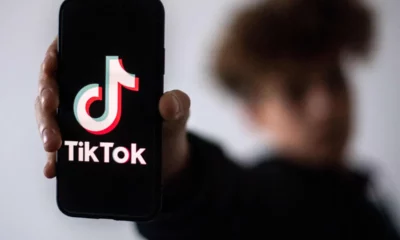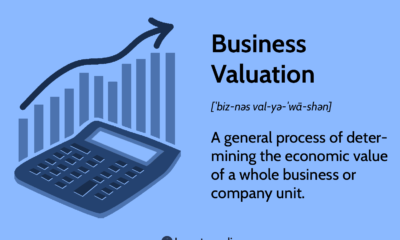In our fast-paced world, efficient and reliable parcel delivery services are essential for individuals and businesses alike. FedEx, a global leader in logistics, has introduced a feature that adds a layer of convenience to the tracking and delivery process – the FedEx Tracking Door Tag. This innovative tool allows recipients to take control of their deliveries, providing flexibility and ease of mind.
What is a FedEx Tracking Door Tag?
The FedEx Tracking Door Tag is a small, durable label that FedEx delivery personnel leave at the recipient’s address when a delivery attempt is made, but the recipient is not available to receive the package. It serves as a communication bridge between the recipient and FedEx, enabling recipients to choose from various delivery options without needing to interact directly with customer service representatives.
Key Features and Benefits
- Delivery Options: The door tag provides recipients with a range of delivery choices, such as scheduling a redelivery for a convenient time, picking up the package from a nearby FedEx location, or even authorizing delivery without a signature.
- Convenience: Recipients no longer need to wait at home for a package. The door tag allows them to take control of their delivery by selecting the option that best suits their schedule.
- Time-Saving: Reducing the need for unsuccessful delivery attempts saves both the recipient’s time and the delivery personnel’s resources. It streamlines the delivery process and ensures packages reach their intended recipients promptly.
- Flexibility: Whether it’s rescheduling a delivery attempt, redirecting the package to an alternative address, or holding it at a FedEx location for pickup, the door tag empowers recipients to adapt to changing circumstances.
- No More Missed Deliveries: The door tag reduces the chances of missed deliveries, ensuring that packages are received securely and promptly, even when the recipient isn’t available during the initial delivery attempt.
How it Works
- Delivery Attempt: The FedEx courier attempts the initial delivery to the recipient’s address. If no one is available to receive the package, the courier leaves a door tag.
- Door Tag Information: The door tag contains essential information such as the tracking number, delivery options, and a barcode. Recipients can use this information to access their delivery preferences online.
- Online Access: Using the information on the door tag, recipients can visit the FedEx website or use the mobile app to access their delivery options and make a choice.
- Choice Selection: Recipients select their preferred delivery option, whether it’s rescheduling, redirecting, or authorizing delivery without a signature.
- Confirmation and Updates: Once the recipient makes a selection, FedEx provides confirmation and updates regarding the chosen delivery option.
The FedEx Tracking Door Tag adds an extra layer of convenience and control to the package delivery process. With its range of options and flexibility, recipients can manage their deliveries efficiently and avoid missed deliveries. This innovation reflects FedEx’s commitment to customer satisfaction and its continuous efforts to enhance the overall shipping experience. As the world of logistics evolves, tools like the FedEx Tracking Door Tag are poised to become indispensable assets for both businesses and individuals.
Expanding Possibilities for the Future
As technology continues to reshape the way we interact with the world, it’s likely that innovations in package delivery will keep evolving. The FedEx Tracking Door Tag is just one example of how a simple concept can transform the customer experience and streamline logistics. Looking ahead, we can anticipate even more advancements that harness the power of data, automation, and user preferences to create a seamless delivery process.
Integration of Smart Technology: With the rise of smart homes and Internet of Things (IoT) devices, it’s possible that future iterations of door tags could interact with these technologies. Imagine a scenario where your smart doorbell communicates with the door tag, allowing you to remotely select delivery preferences in real-time.
Predictive Analytics: Utilizing data analytics, FedEx could refine its delivery processes by predicting the most suitable delivery time based on recipient behavior and preferences. This could help reduce the need for redelivery attempts and further enhance efficiency.
Enhanced Security: Security concerns are paramount when it comes to package delivery. Future door tags might incorporate biometric authentication or QR codes to ensure that only authorized recipients can access their delivery options.
Sustainability Initiatives: As environmental consciousness grows, delivery services are also exploring ways to minimize their carbon footprint. Future door tags could offer eco-friendly delivery options, allowing recipients to opt for consolidated deliveries or even carbon-neutral shipping methods.
Global Accessibility: With the increasing globalization of commerce, door tags could expand their offerings to accommodate international deliveries. This might include language customization and culturally sensitive delivery choices.
Conclusion
The FedEx Tracking Door Tag is more than just a convenient tool – it’s a representation of the evolving landscape of package delivery. By putting power in the hands of the recipients, FedEx has taken a significant step toward creating a more personalized, efficient, and user-centric delivery experience. As technology continues to shape our world, innovations like the door tag remind us that even seemingly small changes can make a significant impact on our daily lives.
In an era where speed, convenience, and customization are paramount, the FedEx Tracking Door Tag stands as a beacon of innovation and customer-centricity. By empowering recipients to shape their delivery experience, FedEx is setting a high standard for the logistics industry, and as we look toward the future, it’s exciting to imagine the possibilities that lie ahead for package delivery and beyond.

 Health2 years ago
Health2 years ago
 Tech1 year ago
Tech1 year ago
 Entertainment2 years ago
Entertainment2 years ago
 Entertainment2 years ago
Entertainment2 years ago
 NEWS2 years ago
NEWS2 years ago
 Games1 year ago
Games1 year ago
 Apps2 years ago
Apps2 years ago
 Games2 years ago
Games2 years ago


















